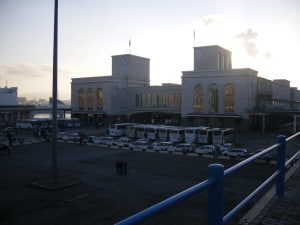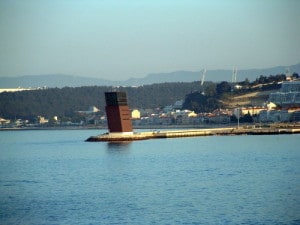 Captain Albert Schoonderbeek
Captain Albert Schoonderbeek
Another beautiful day and another beautiful port. As Monte Carlo is facing east, it is always a pleasure to approach the port in the morning as the rising sun shines over the whole area. Apart from a few fishermen there was nothing in the way. The Sunday sailors and gin palaces were still happily tucked away in the harbour and so we could proceed unhindered to our anchorage. As we were banned to Fontveille, due to the preparations for the Grand Prix, I had to find another anchorage. Our regular anchorage is just to the North of the new pier. Right abeam is the Hotel under which the race cars run their race, but using that location now would result in a much too long a tender distance. When going further to the South, the water gets deeper and the only shallow place that is really nice for anchoring is prohibited. The Oceanographic museum has some sort of water inlet system at the bottom of the cliff and thus we cannot drop anchor there.
The Captain of the Azamara Journey was obviously suffering from the same problem and decided to anchor all the way to the south. So far that I thought he was going to run his tender service into the marina of Cap Agile. However the boats were also going into Fontveille making it a long distance for them. As it was nice weather and no wind expected, I had no problem with dropping the anchor in 80 meters of water (240 feet) and could thus keep the tender distance to the port to a minimum. Dropping the anchor is really the wrong phrase here; with such a water depth we lower the anchor on the windlass, shackle by shackle, all the way down. (A shackle is one link of the chain, which is about 30 centimeters) Because of the depth most of the chain is hanging vertically and thus you are never certain if the anchor has dug in when the ship is in position. You can simply not see how the chain is leading and where to.


